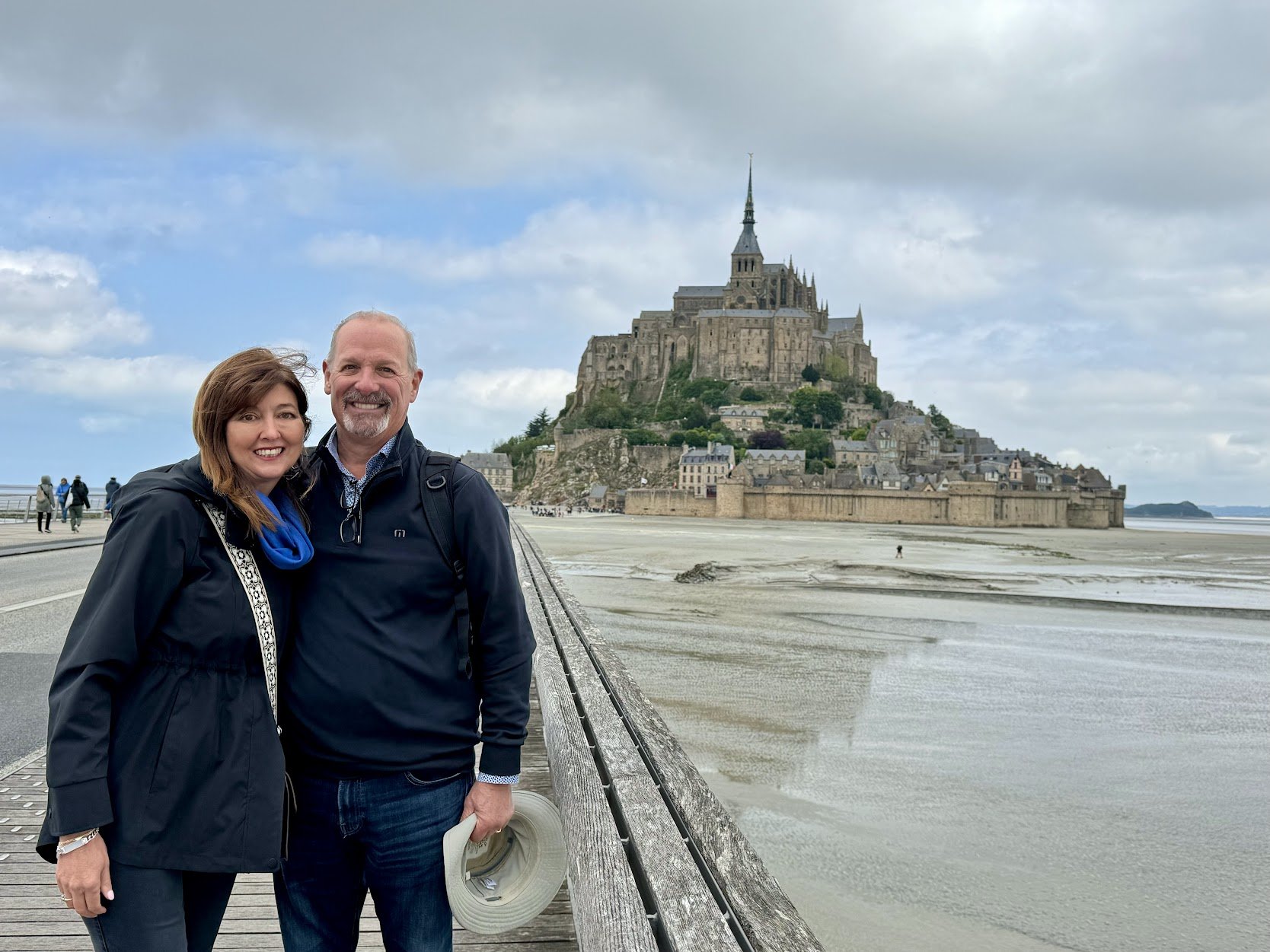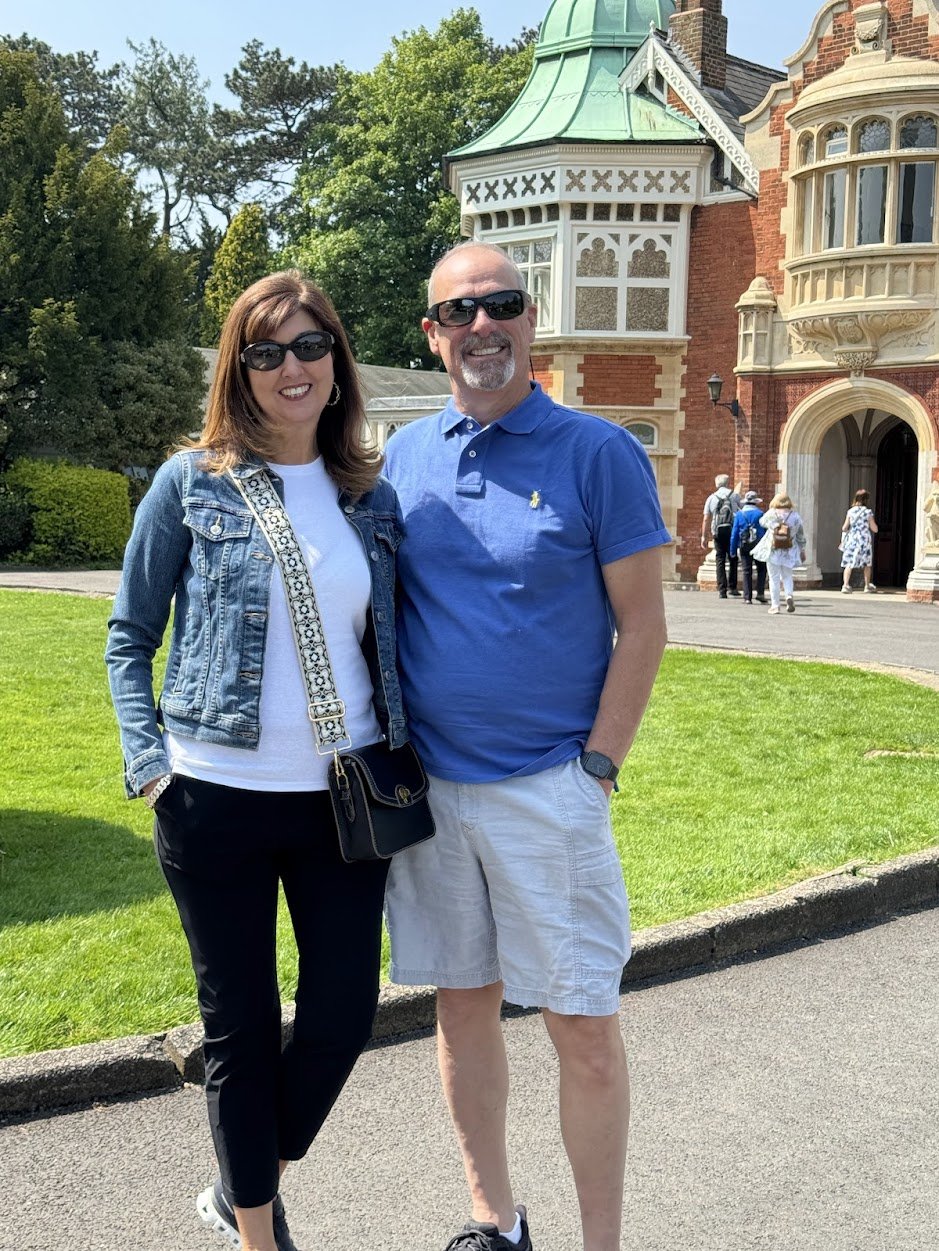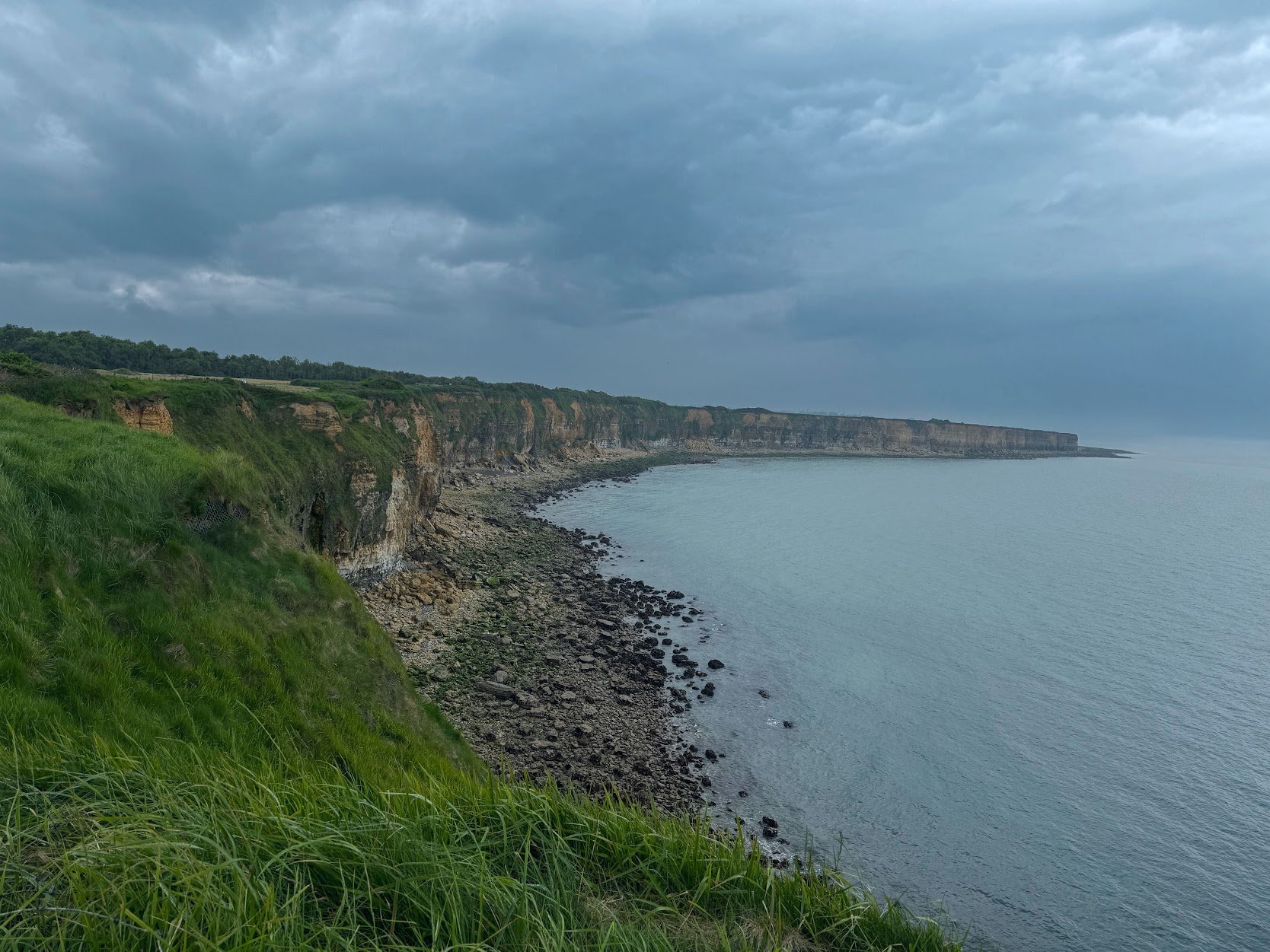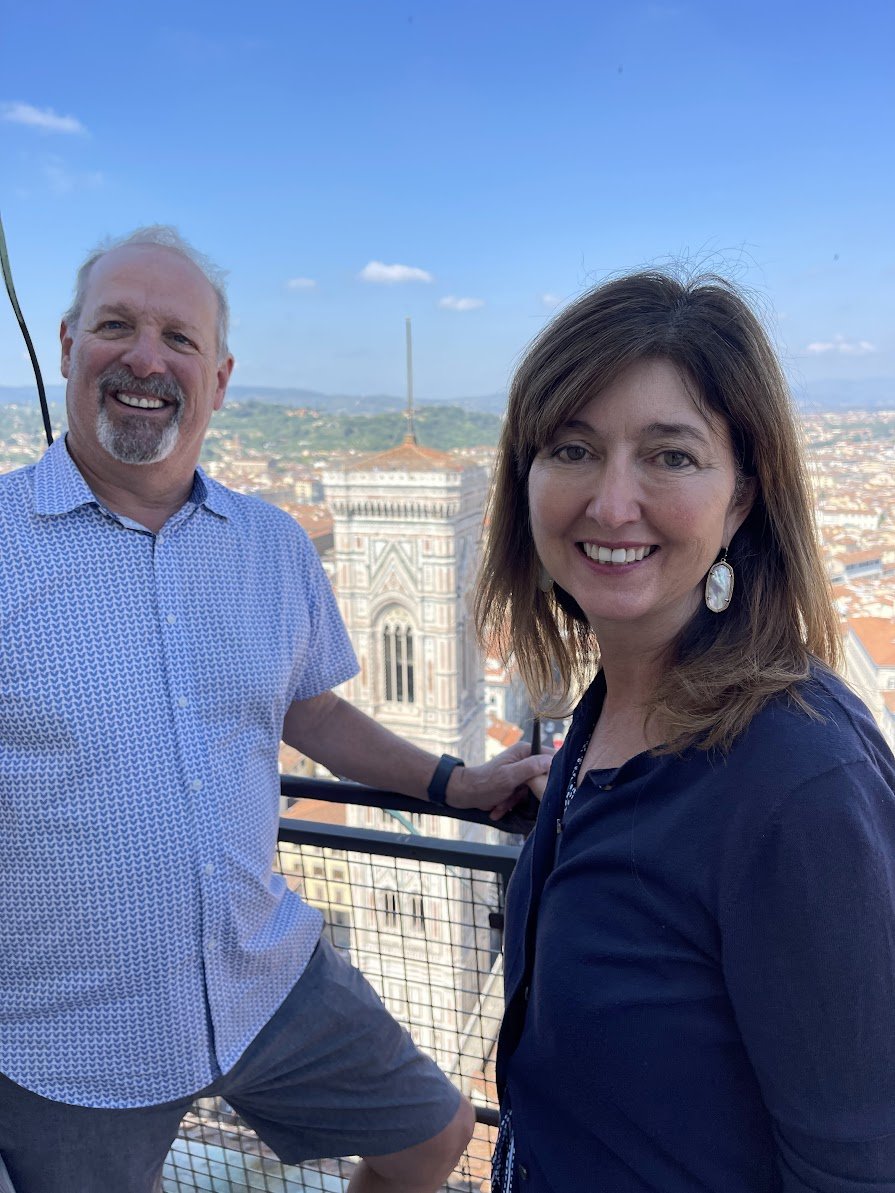Magnificent Mont-Saint-Michel, France
Did you know that Mont-Saint-Michel is the second most visited spot in France, right after Paris? We were surprised to learn that this 8th-century church, built on a rocky island, attracts so many visitors. During a day trip, we discovered the rich history of Mont-Saint-Michel and its architectural marvels.
Mont-Saint-Michel sits along the Normandy coast, south of the famous beaches of WWII. This tidal island is about a half a mile off the coast. To reach the island, it is necessary to park in a lot offsite and either walk or take one of the shuttle busses that run daily.
If you walk, you are perhaps treated to a little entertainment from a local along the way.
What makes this such a unique spot is that access to the island is entirely dependent on the ocean tides. Until the current bridge was built in 2014, getting to the island took perfect timing. Today, tourists love to walk on the muddy sands during the low tides. But be careful, these sands are often called “quick sands,” in that your feet can sink and get stuck very easily.
Since the island was continuously built over 1,000 years, there is a lot of different architectural styles. Walking over the bridge into the small village feels like walking back into medieval times.
Very narrow, “streets” were bustling on this spring day in the village. Only about 30 people actually live on the island. There is a small hotel where it would be interesting to essentially have the island all to yourself after the day crowds leave.
On this trek we were on a semi-private tour that started in Bayeux. We would recommend the small group route, rather than the big tour buses. Our guide was so knowledgeable! We had just one other lovely couple on our tour. As we hiked to the top the streets got very narrow!
Climbing higher toward the top of the mountain and the Abbey, looking back at the island village.
So why was this church built in this location? According to legend, in the year 708, Archangel Michael appeared to Aubert, the bishop of Avranches, in a dream. The Archangel instructed Aubert to build a church on the rocky island of Mont-Tombe. Aubert initially dismissed the vision, but after the Archangel appeared two more times, and to emphasize his point, touched Aubert's head and burned a hole in his skull with his finger, Aubert was convinced. He then began the construction of what would become the famous abbey on Mont-Saint-Michel. Can you even imagine how to begin such a massive project?
Throughout the ages, the church and village were expanded. That expansion also coincided with who controlled the island. After it’s construction it became a major pilgrimage site, like Santiago de Compostela in Spain. During this time the Normans ruled the island. Next, it was ruled by William the Conqueror following the hundred years was in 1066. Finally, Mont-Saint-Michel returned to French control in the early 13th century.
Each expansion over 1,000 years added unique architecture of the time.
If you make it to the top, you’ve now climbed a little over 300 feet. It can be quite chilly when it’s windy.
For a place that had so many ownership struggles over the years, I wondered what happened to Mont-Saint-Michel in an occupied France during WWII? Due to it’s remoteness Mont-Saint-Michel held no strategic advantage so the Nazi’s simply used it as a tourist destination at the time, with a reported over 300,000 German visitors during the war.
This is the facade of the abbey church at Mont-Saint-Michel. This is an example of expansion over the years. The facade is characterized by its Romanesque architecture with three large arched windows and a central doorway.
At the top of the structure, the spire rises prominently, crowned with a gilded statue of Archangel Michel. The statue was added in 1897 and stands 15 feet tall.
Inside the beautiful Abbey which stands nearly 80 feet tall.
The cloisters were added in the 13th century as a place of prayer and meditation for those worshiping here.
There was a time during the French Revolution, the church was closed and converted to a prison. This wheel was built as a hoist to haul up supplies. The prisoners, of course manned the hoist. There were over 14,000 prisoners, many of them priests, during the 70 years it operated the prison. Victor Hugo was one of the many the helped shutter the prison, to return Mont-Saint-Michel to a church. The restoration began in 1872.
A French omelet! There are several restaurants on the island and they are not inexpensive at all. They also get very crowded right around lunch. Tip: If you arrive in the morning, try to make a lunch reservation for later in the day. We did not and had limited choices. The traditional omelet was delicious though.
One last look at the spire and Archangel Michel. Archangel Michel holds a great deal of significance in this part of Europe, symbolizing the triumph of good over evil. See how Archangel Michel played a significant role in the Allied invasion in Normandy in 1942, found in our post: HERE.
On a trip to France, if venture outside of Paris, Mont-Saint-Michel is about 4 hours away and well worth a visit!























An adventure in Bayeux, mixing WWII history, ancient sites, and local charm